Push vs pull marketing is a hot topic. Sometimes a heated one! 😡
Marketers don’t always agree on whether push or pull channels are the right to go for.
But what is push and pull marketing? And what is the difference?
- First I will explain the difference in simple terms
- Then I will show you the pig picture with numbers and graphs
- Finally I will tell you which channel to use based on our data
I think our data will surprise you!
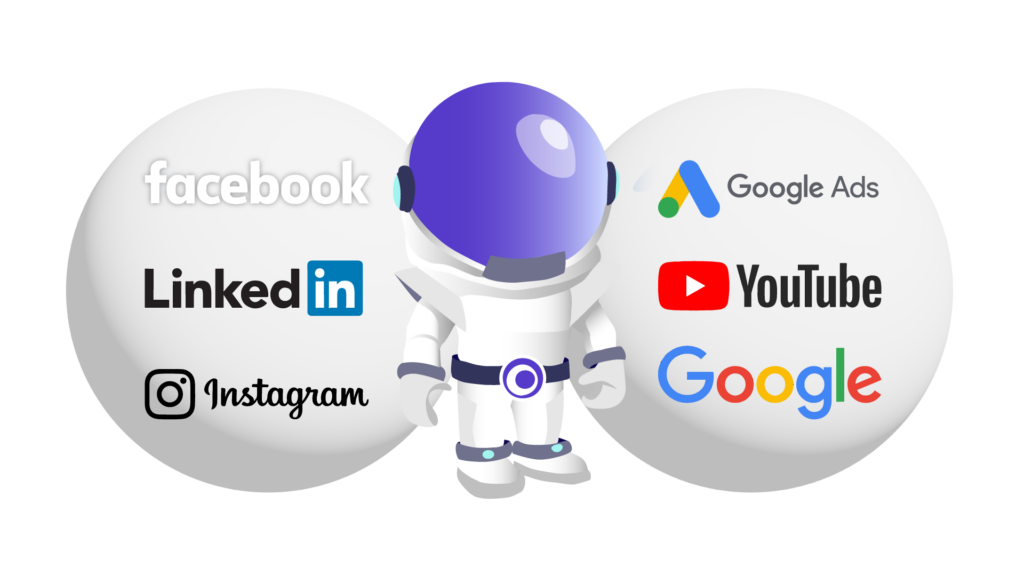
What is the difference between push and pull marketing?
Here is a quick explainer about push and pull marketing before we get to the statistics 👍️
In a nutshell:
- Pull marketing means that you’re using a marketing strategy that draws potential consumers towards your products.
- Search Engines and databases like Google, Bing, Youtube, etc. fall into “pull channels”
- Push marketing on the other hand means that you are trying to promote a specific product to an audience that you think will find it relevant.
- Social Media is considered a “push channel”
Typically, businesses use pull channels:
- When the user knows what he or she is looking for
- When they require more upfront research (e.g. a complex product)
- When trying to move the customers to the next stage in the Awareness Funnel
Typically, businesses use push channels:
- When launching a novelty or new product or service
- When operating in a very niche market
- When running a short-term promotion
- When the low hanging pull channels have “dried up”
- When doing branding campaigns
Now let’s look at the numbers 📈
The push and pull marketing case study
Our study across industries shows that traffic from pull traffic converts 68% higher than push traffic (source).
That number makes it clear why businesses are ready to pay a higher price point for “pull” traffic.
Push vs Pull Traffic Distribution in %
The latest major US survey shows:
Websites got more traffic from social media (43%) compared to search engines like Google (35%) in 2015.
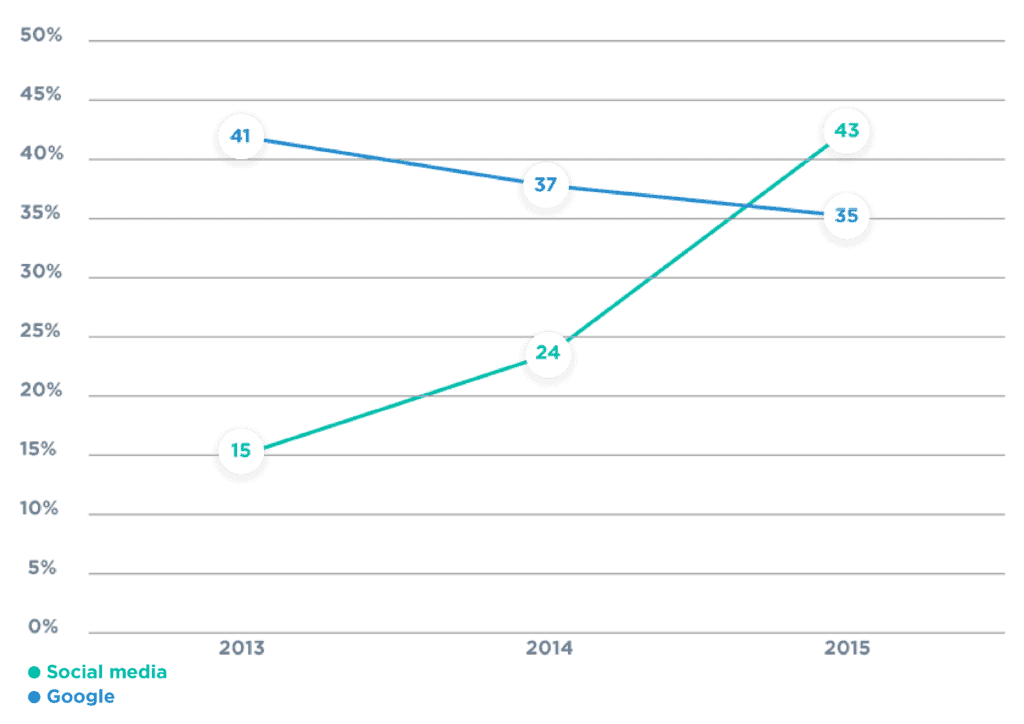
This, however, is not true for most businesses. The numbers above are gathered from 200,000 online news websites.
This means the trends are not necessarily the same when websites have other purposes than building buzz around news.
For that reason, we decided to test the same two channels for Danish companies:
Traffic Distribution For Danish Companies
We conducted research that shows how the traffic division looks like among Danish firms in 2017:
- Search engine (pull): 48,7%
- Social media (push): 8,2%
So what’s the push and pull distribution in those marketing campaigns? It is clear from this graph that Danish companies are way more dependent on search engines like Google (pull) than they are on social media (push) marketing.
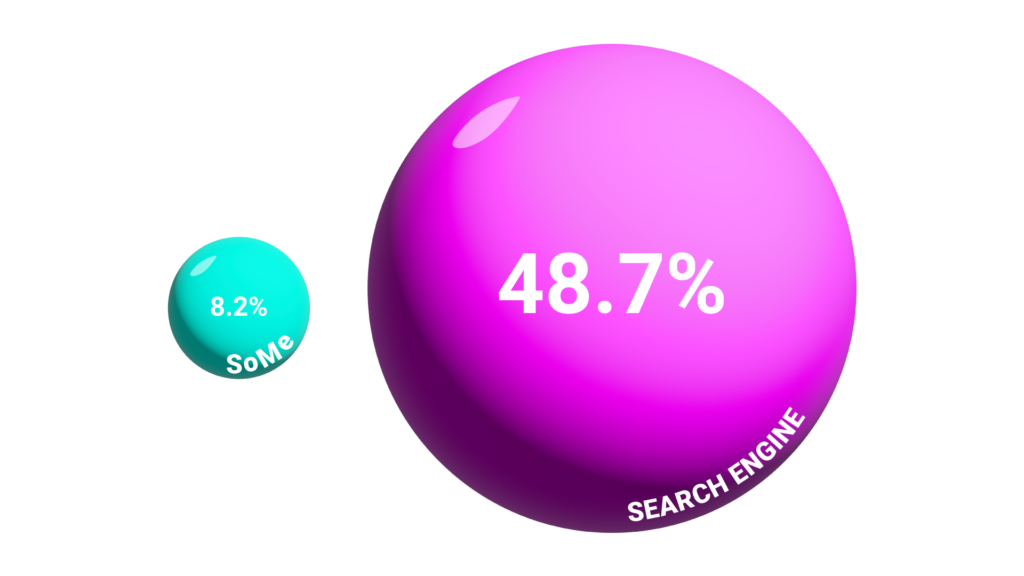
Source:
30 Danish (anonymous) companies with revenue between 1-100 million DKK (15 B2B and 15 B2C)
Purchase-Ready Google Traffic Increases (Pull)
You might have heard some comments recently that Google won’t last long. But this can’t be further from the truth. Google is not headed down. On the contrary, the purchase-ready Google traffic has skyrocketed with 65% more searches in just two years. (source)
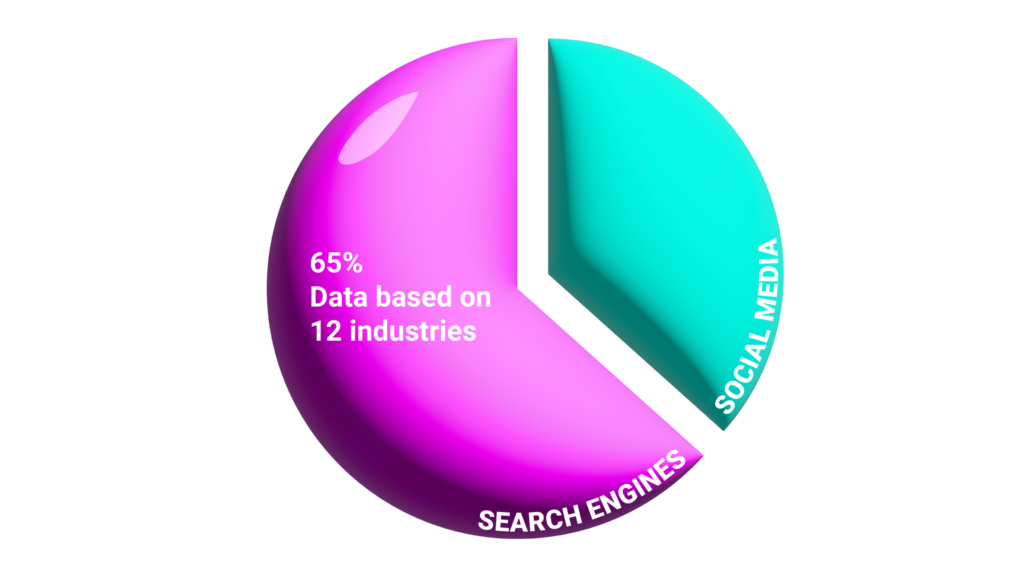
Push and Pull channels click prices
Let’s say you want to pay for a push and a pull click. What is the price difference?
- Push traffic is typically cheaper per click. – i.e., $0.5 per click is not rare.
- Pull traffic is more expensive and especially dependent on the competition in the industry (i.e., lawyers). The most expensive search keyword costs more than $50 per click!
This concludes the case study 📊👍️
Push vs Pull channels – which should you use?
To understand whether you should use a push marketing or a pull marketing strategy, you need to determine where your potential customers are positioned in your awareness funnel.
Now, the Awareness Funnel might sound scary, but it’s a rather simple concept to grasp. It consists of just 4 steps – and it often dictates almost every step in your marketing tactics and strategy.
The 4 steps of the Awareness Funnel are:
- Unaware
- Problem Aware
- Solution Aware
- Product Aware
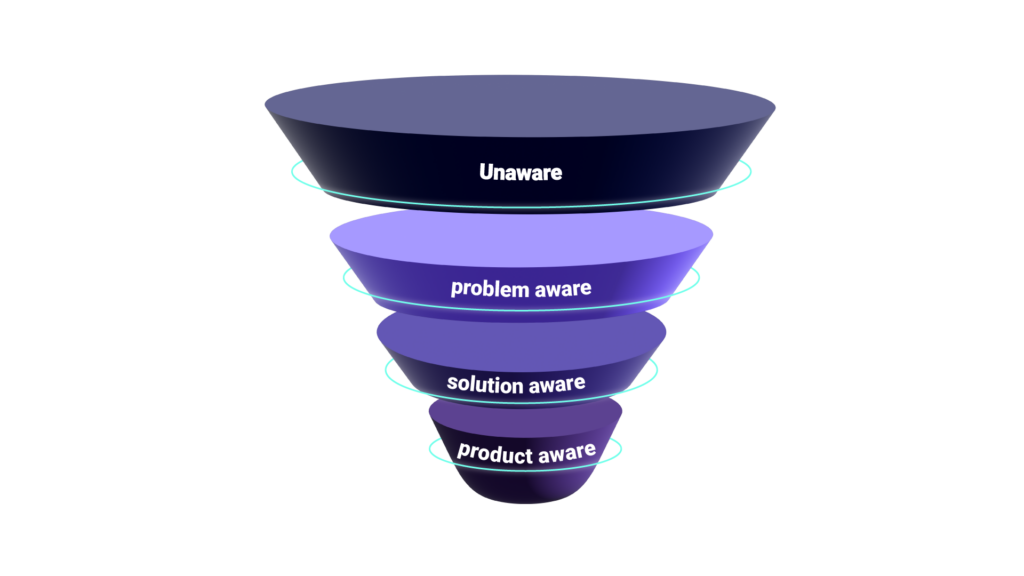
These steps will directly dictate what customers do and search for. For example:
- Unaware – Potential prospects who are unaware of their problems aren’t actively searching for anything related to your products.
- Problem Aware – People who in one way or another (e.g. through push marketing) have become aware that they have a problem are starting to become active in their search. For example, they are trying to understand their problem better. They are, however, not necessarily searching for a product just yet.
- Solution Aware – These customers are actively doing research to understand how to solve the problem they are facing. This is a great place to attract them through pull marketing.
- Product Aware – Similarly to “Solution Aware”, customers have explored enough and are ready to make a purchase. Now they are looking for the best solution according to their needs.
As you can see, push and pull marketing both have their strengths and weaknesses. And it’s a lot about timing. Therefore, they are bound to work most effectively when used together.

Why use a combination of push and pull strategies?
So what’s the logic behind using both strategies? The idea is that you want to reach your customers across multiple channels to increase your chances of conversion. This is also called omni-channel marketing.
To decide how much of each channel you should use, you need to be clear about a few things first:
Product:
– What is my product/service/offer?
– Is it a brand new/revolutionary product I’m offering?
Timing/Duration:
– Is it a one-time-only or time sensitive promotion?
– Is it a very limited offer?
– Is it a seasonal sale?
Target Customers:
– Who is my target customer?
– What are my target audience’s favorite websites?
– What is my target group’s preferred Social Media?
– At what point in their lives do customer think about buying my product?
– How do customers learn about their problems that my product solves?
Resources:
– How much money can we spend on that promotion?
– Do we have a team that can produce the content needed?
– Do we have a digital marketing specialist to set up and control the promotions?
Sometimes, ranking high on Google for Solution Aware & Product Aware searches is almost impossible because of the high competition. In such cases, you can opt in for more Problem Aware searches where you aim to increase your audience of newsletter subscribers and convert them through email marketing later on.
It’s very important to answer those questions because then you will see what the potential for your product is on each channel.
Recommended Read: Top 6 Ways To Promote Your Blog For Free
Examples of push and pull marketing?
Now let’s look at some examples of companies using those marketing strategies to reach their customers. It’s important to understand that budget will often time have the biggest say in your decision-making when it comes to which channels you want to implement in your case/company.
That being said, most of the time you see companies using BOTH inbound and outbound strategies, and that’s especially true for bigger businesses.
For the sake of simplicity, let’s examine the inbound and outbound marketing campaigns of the hardware/electronics company NZXT.
NZXT Inbound & Outbound channels
Push Channels:
For this example we are going to use Facebook’s own functionality added in 2018 that allows us to inspect a company’s current live advertisements.
To do that, we will go to the “Info and ads” panel of NZXT’s Facebook page. Here’s what we find: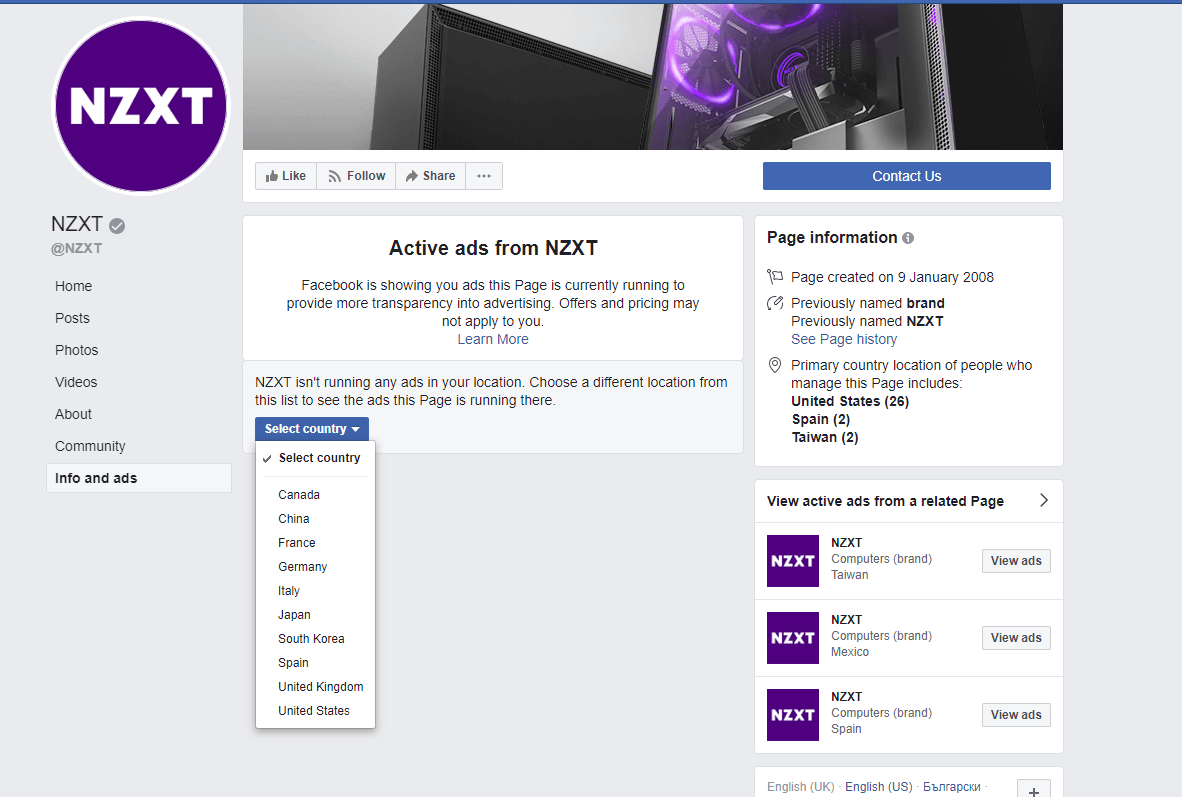
You can see that NZXT is running ads in 10 countries as of April 2019.
After selecting one of the countries, you will be able to see all of their active advertisements. Here are a few examples of the promotional offers they are trying to show:
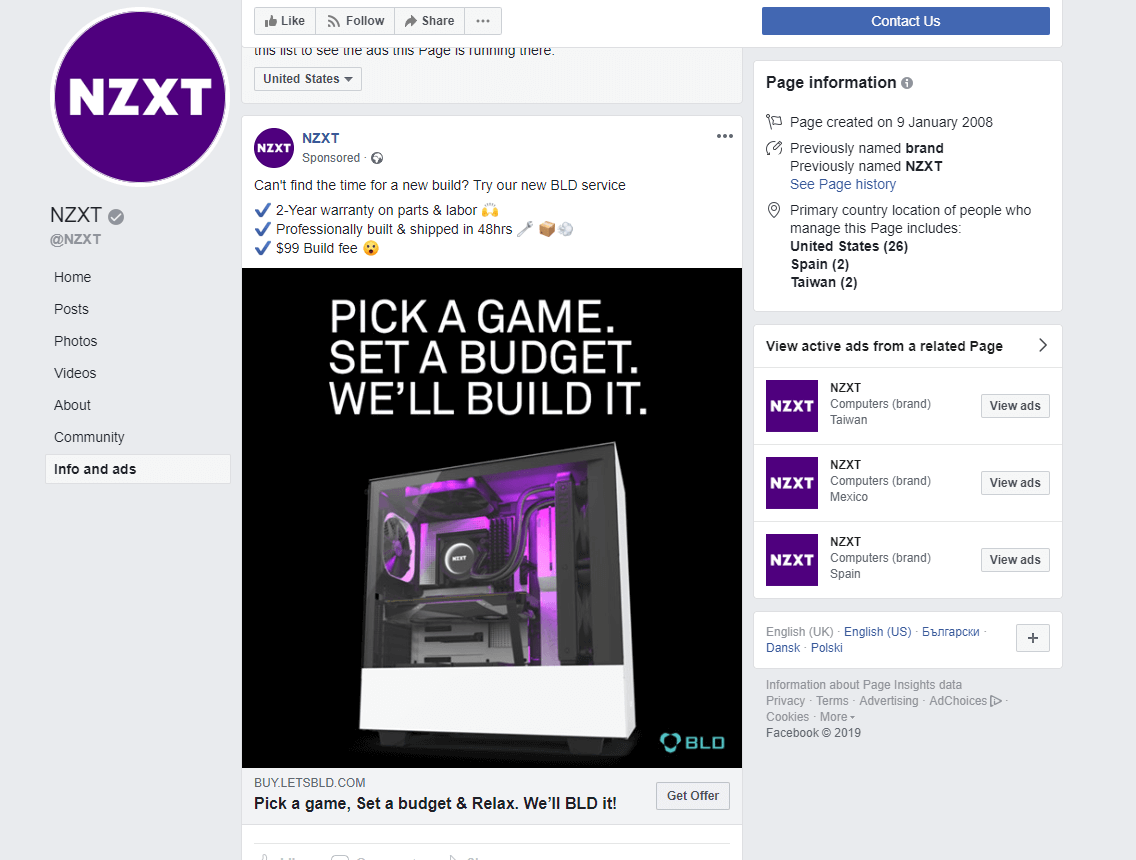
NZXT Push Marketing Example 1
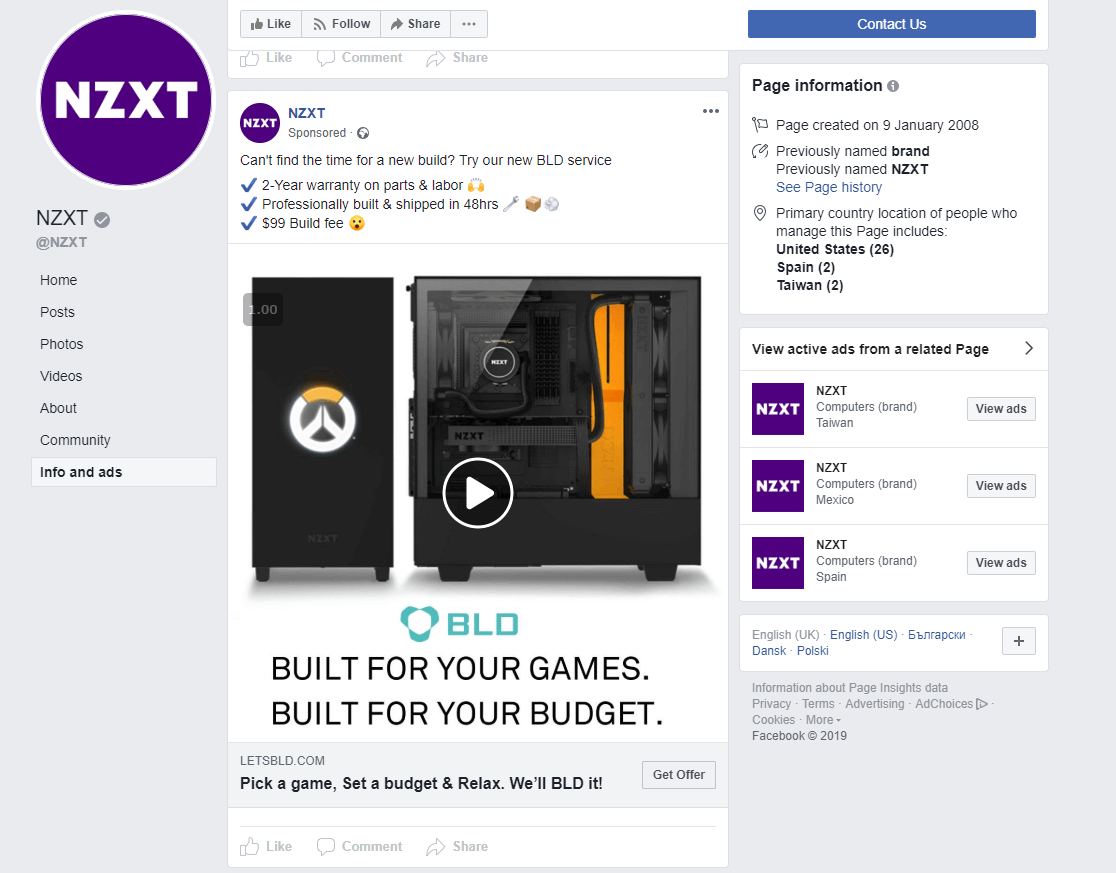
NZXT Push Marketing Example 2
They are heavily promoting the “build your own pc” ad – possibly with different types of target audiences.
Pull Channels:
In their pull channels, however, things look slightly different.
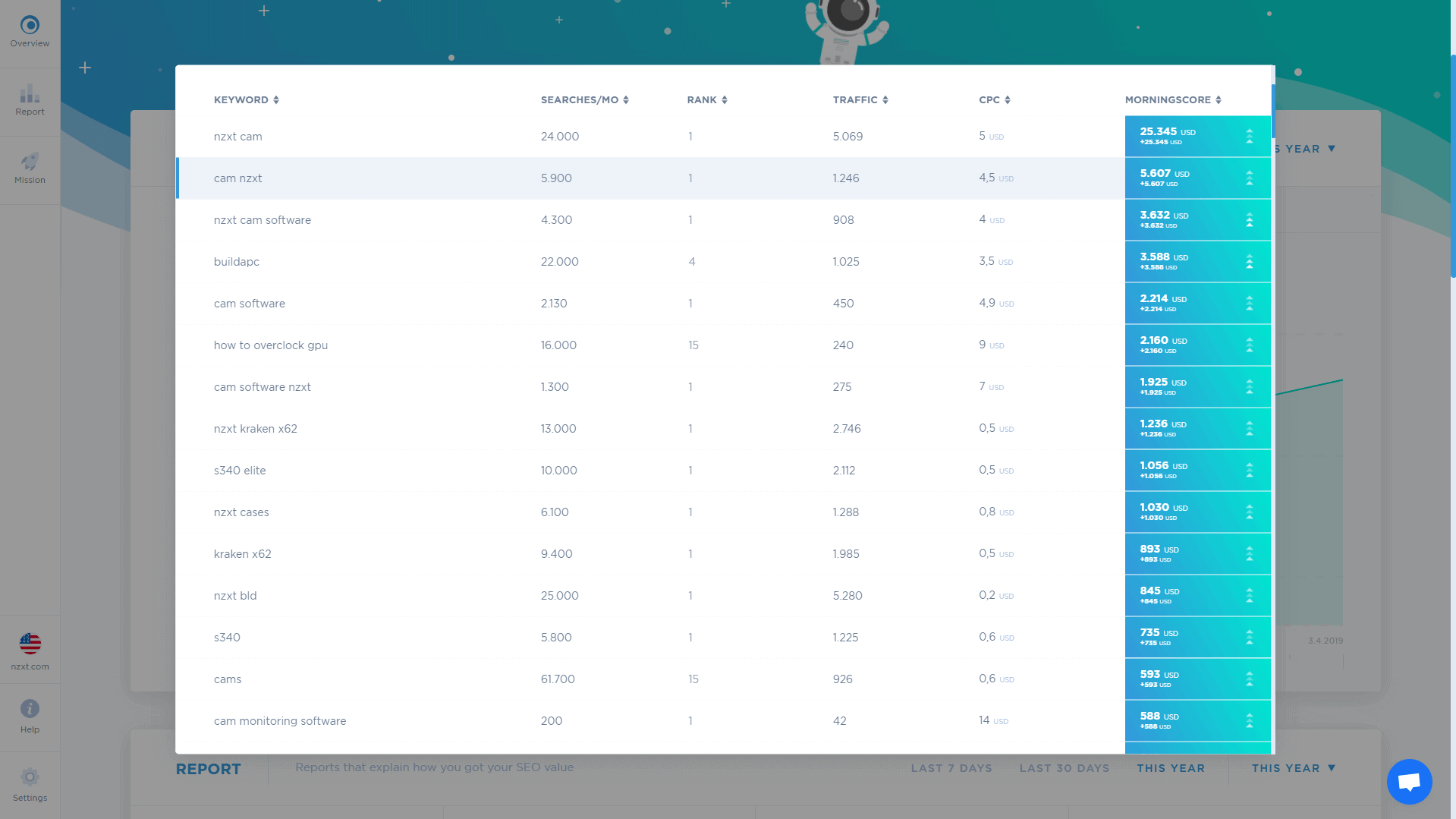
NZXT Pull Marketing Example 1
You can see that the company ranks both for searches like “build your own pc” but also for plenty others where people generally take longer to make a decision. Additionally, NZXT also ranks for hundreds of informational searches, meaning they pull in a lot of colder audience which they focus on converting at a later point.
NZXT conclusion:
Now one thing becomes very obvious. You can immediately see how NZXT uses a mix of both strategies to get the sale. Their pull channels are performing very well for keywords the users are actively searching for (“build your own pc”). However, since that is oftentimes a time-sensitive decision, their outbound approach comes as a supplementary channel.
What Does This All Mean For You?
Now that you understand the current trends shaping those strategies, it’s time to conclude with several take-away points. For the future, consider:
- Increased traffic does not equal more sales and revenue – but the conversion rate for pull traffic is on average 68% higher than push traffic
- It definitely pays-off to invest in high purchase-oriented PPC prices on Google
- Facebook ads and similar channels don’t necessarily bring purchase-ready traffic directly.
- Push traffic is an almost infinite amount which makes it an excellent supplement to pull traffic (which in some cases can be completely sucked out with less than $500 per month).
Start off the right foot, by knowing your platforms before you begin your work. Many are preconditioned towards a channel and jump the gun based on what they think. The facts, however, show that it depends 100% on your industry and your advertising goal so that either one of the platforms fits best for your company.

